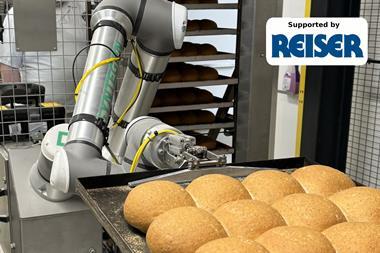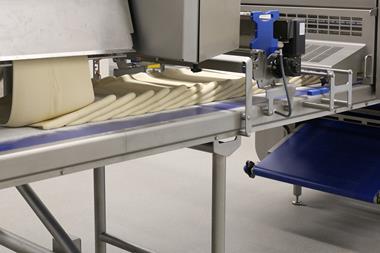Michelle Perrett looks at why retarder provers are key in terms of both time management and product quality in the modern bakery
Download a pdf of this report here
Only the most naïve person would enter the baking industry expecting to work a 9am to 5pm shift. For some, 5am to 9pm might be closer to the truth!
Fortunately, retarder provers help businesses gain some control over time, while also offering benefits when it comes to product quality.
One such business is East Sussex-based Bexhill Farm Kitchen, which last year won British Baker’s Britain’s Best Loaf competition for the third time. “We make the dough, rest it, mould it and put in the retarder, which refrigerates it,” says bakery owner Lee Smith. “It stores the yeast and pauses it to a temperature where it no longer rises.
“We can set the timer to come on for the prover and then [we can] come in an hour-and-a-half later and put it straight in the oven.”
The retarder prover enables the bakery to produce a large amount of dough during the day and supplement orders with a smaller dough run during the night shift. It also helps manage night shift staff numbers.
“It is easier to get people to work through the day than to work through the night,” says Smith. “It means we don’t have to look for another night baker, but can look for someone throughout the day who also does cakes and other things as well.”
Retarder provers can be a big investment, and Smith advises bakers to consider the functionality they need, and to get advice from other bakers on the equipment they use. He suggests investing in a retarder prover with a heated floor, which can counterbalance any potential humidity issues, especially in the cold weather.
Some bakers use separate retarders and provers, especially when they have larger volumes to produce.
Annette Salter, founder of The Sandwich Box, says using a retarder and a prover allows the business to manage the system of baking more efficiently. As the business is relatively new, it opted to invest in second-hand machines until it was established and could afford the capital investment.
“Without refrigeration and provers you are dependent on ambient temperatures and you can’t control that. On a hot day you would have things proving very quickly and over-proving and on a cold day you would have to wait a long time,” she explains. “If you have got hundreds of loaves to do, you can’t just say I made that bread 10 hours ago, therefore it should be ready. It is held back in the retarder and it slowly proves, which gives you more control over your bake.”
Using retarders and provers also helps with the flavour of the breads, particularly in the case of sourdough, she adds. “Our business isn’t all about high volume, but about quality. For us a retarder is about the quality of our sourdough. It slows the process right down and, when it comes to fruition, there is a well-flavoured and well-proved loaf. Sourdough done in a retarder is the best you can get.”
This view is supported by Hampshire-based Hoxton Bakehouse, which supplies restaurants and delicatessens across the county, including those owned by Rick Stein and Hugh Fearnley-Whittingstall.
“We use retarders for all our bread and cold-cool all our dough,” says Hoxton founder Florence Hellier. “We produce sourdough, cold-prove it and then it goes in overnight. We take it out and, when it has reached room temperature, we bake.”
Retarder provers play a big role in the quality of a bake says Steve Merritt, managing director of bakery equipment supplier EPP. “Provers and retarder provers offer something of a paradox in the bakery,” he adds. “You bake your dough to perfection in the oven, but that sought-after oven-fresh taste actually comes from the proving and retarding process.”
He argues that the availability of baked goods fresh from the oven at any time of the day or night has as much to do with proving and retarding the dough as it does with the oven and technology at the opposite end of the temperature scale. “Take rolls, for example. They typically need around two hours until they have been prepared and are ready to sell. Probably only 18 minutes of the 120 are spent in the oven. So the proving and storage of the dough play a major role in determining their finished quality,” he argues.
Bakers are increasingly aware of the benefits of retarder provers, according to David Charlesworth, sales manager at supplier Norbake. His business has seen strong growth in the number of bakers looking to use retarder provers. “Over the past 12 years the demand for retarder provers has increased approximately 70%,” he says.
Chris Huish, director of independent sales at Mono Equipment, suggests that although retarder provers are easy to clean, bakers should take out a maintenance deal. “People don’t clean what they cannot see and you have a lot of compressors and fans. If you don’t clean that area correctly then you restrict the airflow,” he advises.
How retarder provers work
- Retarder provers work by holding dough at a certain temperature until the baker is ready to prove it. The proving element can then be kicked in at a convenient time, ensuring the dough is ready for baking when required.
- Proving involves controlling three basic factors: temperature, humidity and time. If any of these are incorrectly implemented, then an inferior product may be the result. Not enough humidity and the product will not rise properly and a skin will form on the top. If there is too much moisture it could result in a tough crust.
- Retarder provers come in a range of sizes, from small ones that take trays to those large enough to put whole trollies of product inside. For the biggest bakeries, retarder prover elements can be incorporated into production lines.
Equipment round-up
MIWE GVA proofing unit
Supplier:EPP
MIWE’s GVA fully automatic unit is capable of proofing, retardation, rapid cooling, proofing interruption and dough setting options. It can operate at temperatures between -20˚C and +40˚C and humidity levels between 60% and 98%.
A separate fan control can be stored in each programme, which facilitates enzymatic development, resulting in improved taste, says MIWE.
Lillnord Semi-line retarder prover
Supplier: Norbake
This unit is designed for day-to-day storage of smaller dough pieces and Danish pastries. Its temperature range is -3˚C to +45˚C, although it can go to -10˚C if required.
The equipment uses a pulsating air control system to regulate humidity and temperature during the thaw-out and proving phases. There is also the option of an insulated heated floor with adjustable floor heating.
Williams Crystal Retarder Prover Range
Supplier: Mono Equipment
This is available in two models, RPMC1T and RPMC2T, which are similar but cater for different sizes of business. They are designed and engineered to operate efficiently up to 43˚C and have self-closing doors to minimise temperature gain and reduce energy consumption.
They have a tray capacity of 17 and 34 respectively and feature a top-mounted removable refrigeration system.
Rademaker Handling System
Supplier: Rademaker
For larger bakers Rademaker offers a production line with prover and cooler options that can be integrated into the system.
Its prover is made of stainless steel and has a heating, ventilation and air conditioning system for 5˚C
to 10˚C.
A circulating thermal flow is designed to eliminate energy waste in the cooler and freezer options.


























No comments yet